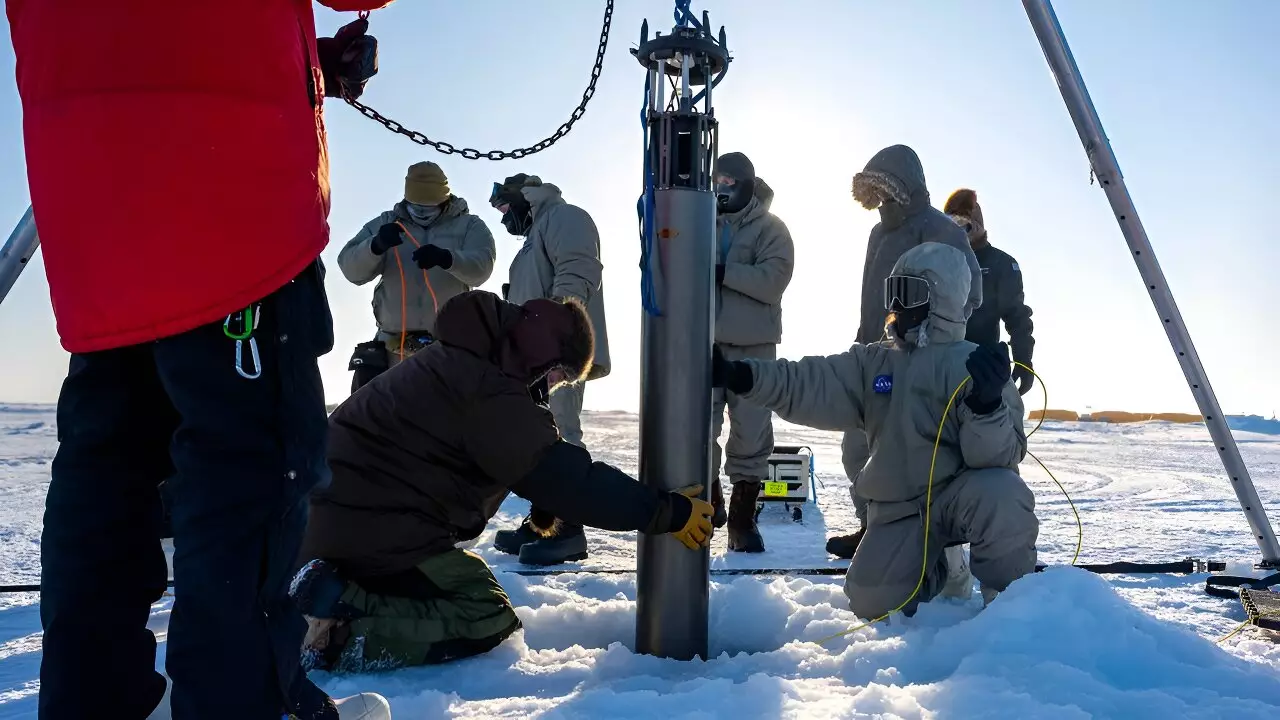The Arctic landscape—a realm where frigid winds sweep across expansive layers of ice—serves as the testing ground for groundbreaking innovations in climate science. The IceNode project, spearheaded by a team from NASA’s Jet Propulsion Laboratory (JPL), aims to unveil the mysteries hidden beneath the Antarctic ice shelves. This initiative could hold the key to understanding the rapid melting of glaciers and its potential impact on global sea levels. As scientists grapple with the unknowns of climate change, IceNode emerges as a promising technology that merges engineering prowess with critical environmental data gathering.
Antarctica, while seemingly remote and desolate, embodies a ticking time bomb in the context of global warming. Estimates suggest that if fully melted, the continent’s ice sheet could elevate sea levels by approximately 200 feet (60 meters). As sea levels inch higher, coastal communities face severe risks, prompting scientists to deepen their understanding of ice dynamics in this vulnerable region. The melting ice, influenced by warmer ocean waters from below, is not only a pressing concern but also a significant variable in climate models.
To create precise projections of future sea level rise, researchers require detailed measurements of melt rates, especially in areas where floating ice shelves meet the ocean—a place referred to as the “grounding zone.” However, the task is daunting; the environments around these melting zones are often perilous and largely uncharted, challenging traditional methods of data collection.
Recognizing the obstacles presented by such difficult terrain, the IceNode project is developing a fleet of autonomous robots designed to traverse beneath significant ice formations. The robots, measuring roughly 8 feet in length and 10 inches in diameter, lack any conventional propulsion methods. Instead, they leverage advanced software algorithms that utilize ocean current models for navigation and positioning. The design includes a “landing gear” system, which allows the robots to tether themselves securely to the underside of the ice, ensuring that they can operate reliably in the harsh Arctic environment.
Once deployed, these robots will journey along the currents, collecting vital oceanographic data. They will record crucial metrics pertaining to the interaction between warm ocean water and ice, along with the behavior of freer meltwaters. This data collection is anticipated to span up to a year, enabling continuous monitoring of seasonal variations that influence melt rates.
The recent testing phase in the Beaufort Sea marks a significant step forward for the IceNode team. Conducted in extreme conditions where temperatures can plummet to -50 degrees Fahrenheit (-45 degrees Celsius), these field tests are essential to validate the robots’ functionality and resilience. Previous trials in more temperate environments, such as California’s Monterey Bay and Lake Superior, have laid the groundwork for this polar expedition. The Arctic setting introduces unique challenges, from technical considerations of the equipment to the physiological demands placed on the human operators involved.
During this critical test, the IceNode prototype descended nearly 330 feet (100 meters) into the ocean, efficiently gathering data on salinity, temperature, and water flow—information critical for modeling and predicting ice melt. Insights gained during these tests will guide further developments and modifications, including the shift towards autonomous operation, freeing the robots from tethered constraints in future explorations.
Although hurdles remain before the full deployment of IceNode’s robotic fleet, the current progress fuels optimism among researchers and engineers alike. The intention behind IceNode is not just the successful collection of data but also establishing a long-term presence beneath the Antarctic ice. Continuous data transmission back to researchers will enable real-time analysis of climate-related changes, significantly enhancing predictive models related to sea-level rise.
In an age where climate change presents unprecedented challenges, innovative initiatives like IceNode represent crucial efforts to confront scientific dilemmas regarding our planet’s health. By gaining actionable insights into the dynamics of ice melt and its broader implications, the IceNode project positions itself at the forefront of environmental research. As nations grapple with climate change policies and long-term strategies, deploying automonous robotic technology under the world’s most extreme conditions might just illuminate the path towards a sustainable future. Through IceNode, we gain more than data; we gain a fighting chance against the climate crisis threatening to reshape our coastal regions.

